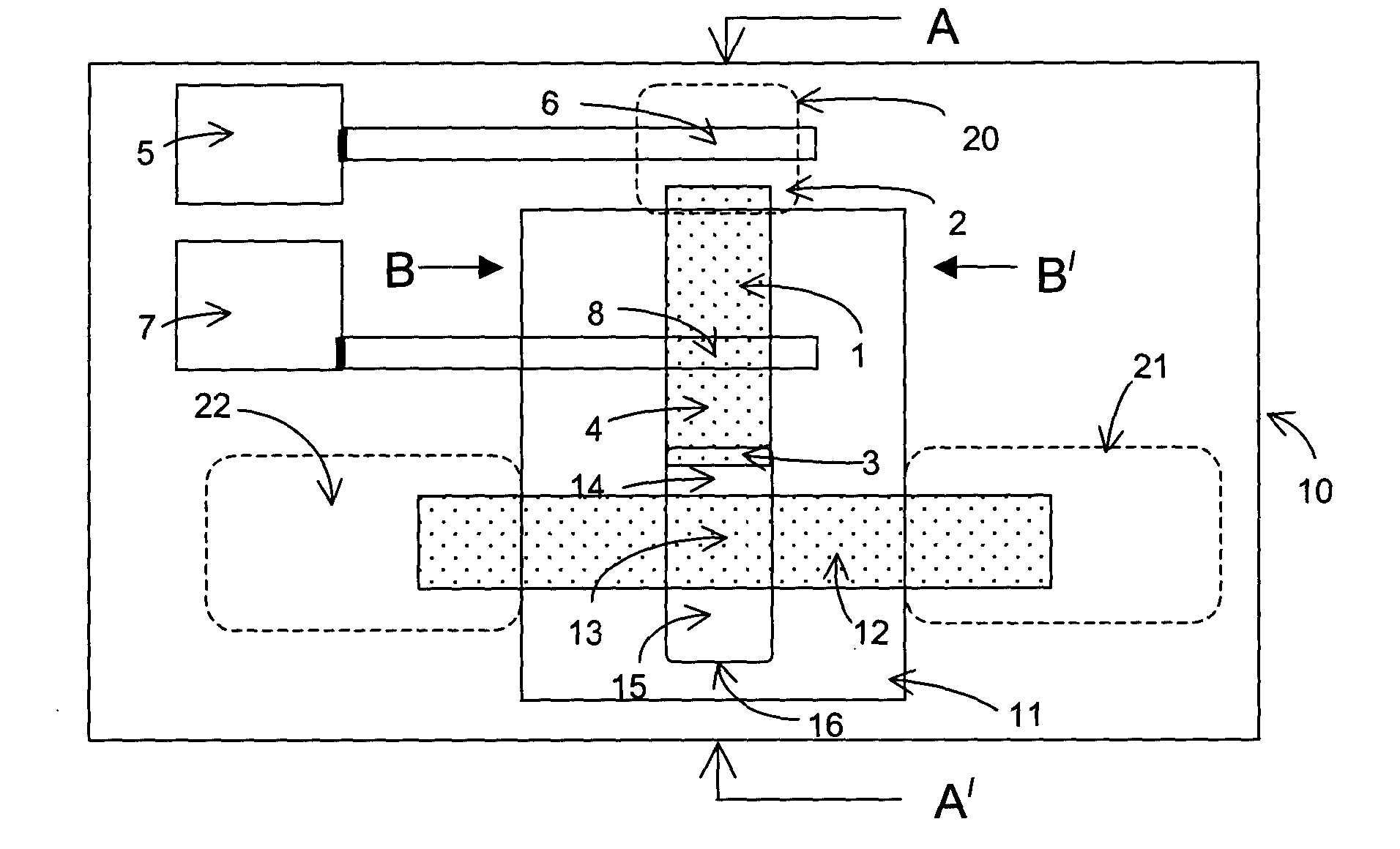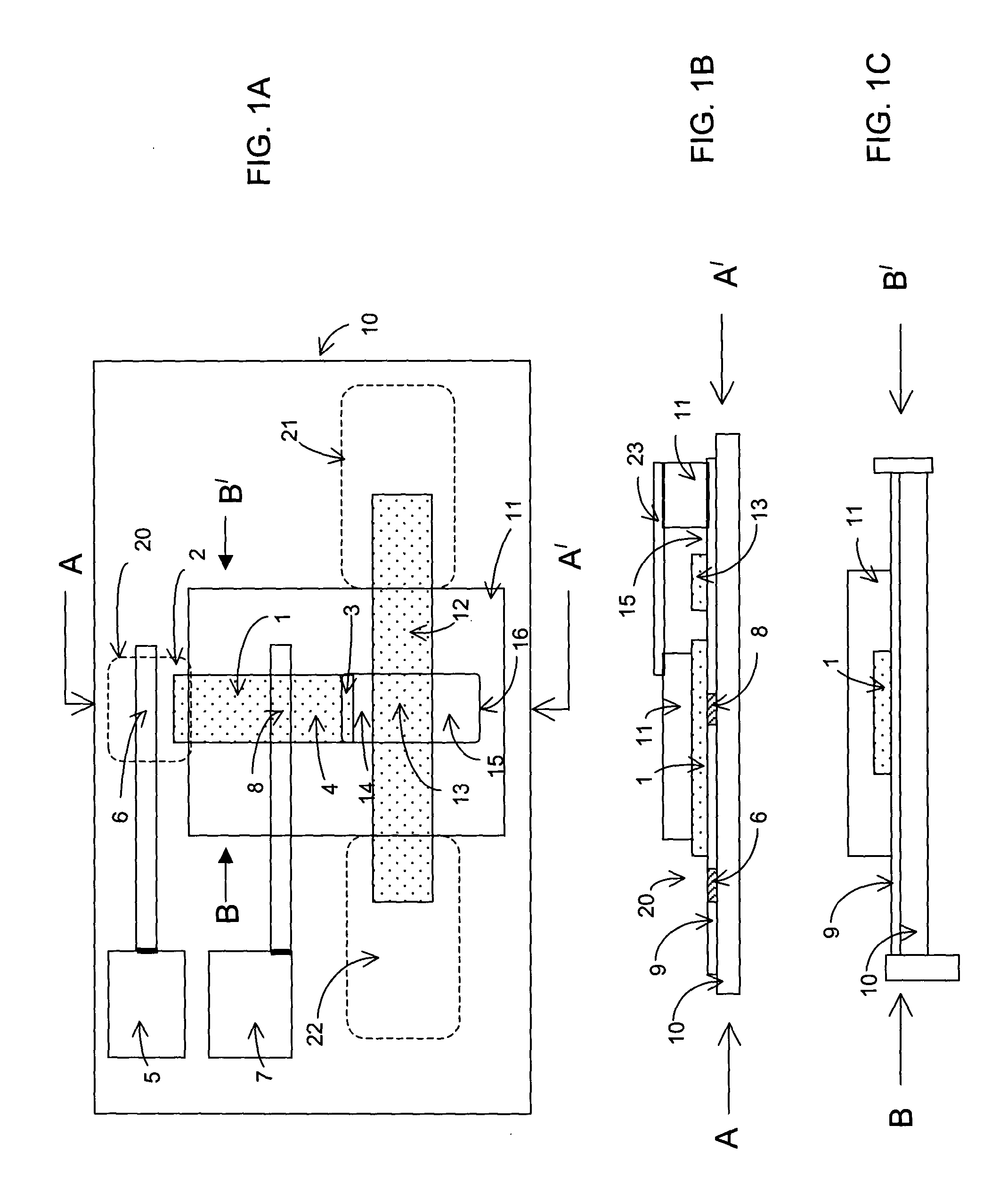Lateral flow diagnostic devices with instrument controlled fluidics
a fluidic control and diagnostic device technology, applied in the direction of electrolysis, diaphragm, isotope separation, etc., can solve the problems of inability to achieve quantitative analysis, limited quantitative and sensitive detection using such devices, and prior art devices that are not generally suitable for quantitative assays, etc., to achieve enhanced sensitivity detection, advanced fluidic capability, and convenient use
- Summary
- Abstract
- Description
- Claims
- Application Information
AI Technical Summary
Benefits of technology
Problems solved by technology
Method used
Image
Examples
experiment 1
to a Vented Channel
To investigate the injector's pumping characteristics with no fluidic load injectors with a vented air channel at their effluent end but with no other fluid-receiving elements were constructed. This configuration is depicted in the schematic FIG. 2E. The injector was first primed by applying an aqueous fluid to the fluid application end of the initially dry injector. Next, a voltage was applied between the integral electrodes and the volume flow rate was measured by measuring the length of fluid in the vent channel of known cross-sectional area at different times. From this the electro-osmotic mobility (EOM) was obtained.
Best performance was obtained with injector fluids comprising aqueous solutions of low conductivity: an electrolyte concentration of about 2 mM was preferred and 10 mM was the upper useful range. A micro-porous cellulose nitrate / acetate (Millipore MF membrane GSWP) having a porosity of 0.75 with 0.11 micrometer pore radius was used as the injec...
experiment 2
to an Enclosed Chamber
Injectors with an enclosed air chamber at their effluent end but with no other fluid-receiving elements were constructed to investigate the injector's pumping characteristics with infinite fluidic load. This configuration is depicted in the schematic FIG. 2A. First, the injector was primed by applying an aqueous fluid to the fluid application end of the initially dry injector. Next, a voltage was applied between the integral electrodes. Fluid was displaced from the injector's effluent end into the enclosed channel of initial volume V1 and at P1=1 atmosphere. The air was compressed as the fluid filled the chamber until steady state when the fluid flow stopped. The new volume of air was V2<V1. The resulting pressure that stopped flow was calculated from Boyle's law to give P2=V1 / V2. A micro-porous cellulose nitrate / acetate with 0.11 micrometer pore radius was used.
Pore Radius of Injector's Micro-Porous Flow Path:
Trapezoidal injectors (input end width 4 ...
experiment 3
to a Fluid-Receiving Element at an Enclosed Air Chamber
To investigate the pumping characteristics of an injector connected to a fluid-receiving element with a flow resistance injectors with an enclosed air chamber at their effluent end connected to a fluid-receiving strip element at a fluid-receiving location along its length were constructed. Both rectangular and trapezoidal injectors were investigated. The configuration of injector and fluid-receiving element is as depicted in the schematic FIG. 2D. The various steps in the operation of the injector of this configuration are depicted in FIG. 3A-3E. A first fluid was applied to the fluid application end of the initially dry strip (FIG. 3A). The strip was filled with the first fluid by lateral capillary flow (FIG. 3B). Next, the initially dry injector was primed by applying an aqueous fluid (2 mM DEA solution) to its fluid application end (FIG. 3C). The injector filled to its effluent end by capillary flow (FIG. 3D). A voltage was ...
PUM
| Property | Measurement | Unit |
|---|---|---|
| radius | aaaaa | aaaaa |
| radius | aaaaa | aaaaa |
| electric potential | aaaaa | aaaaa |
Abstract
Description
Claims
Application Information
 Login to View More
Login to View More - R&D
- Intellectual Property
- Life Sciences
- Materials
- Tech Scout
- Unparalleled Data Quality
- Higher Quality Content
- 60% Fewer Hallucinations
Browse by: Latest US Patents, China's latest patents, Technical Efficacy Thesaurus, Application Domain, Technology Topic, Popular Technical Reports.
© 2025 PatSnap. All rights reserved.Legal|Privacy policy|Modern Slavery Act Transparency Statement|Sitemap|About US| Contact US: help@patsnap.com



